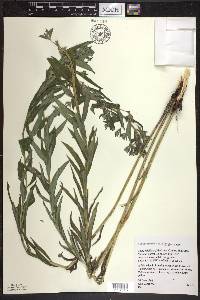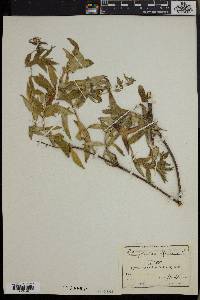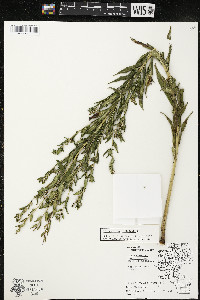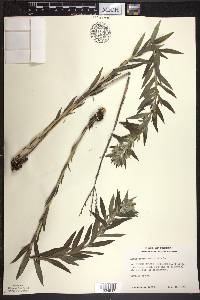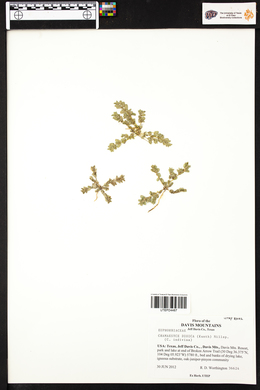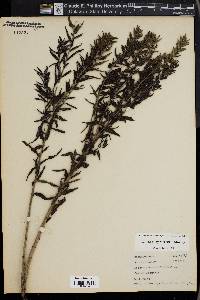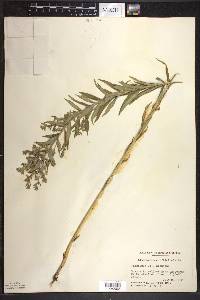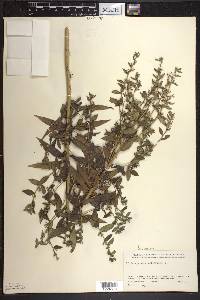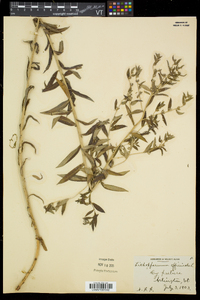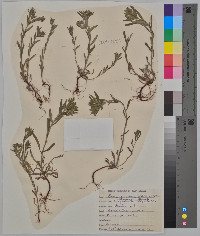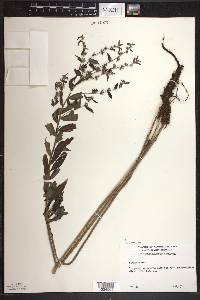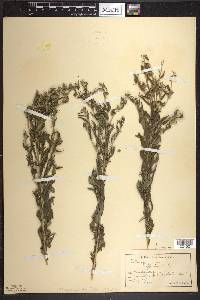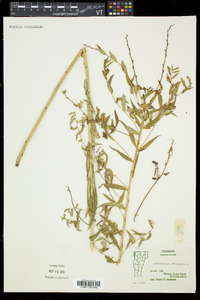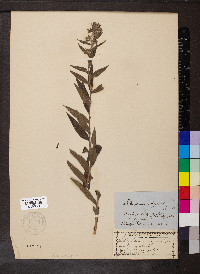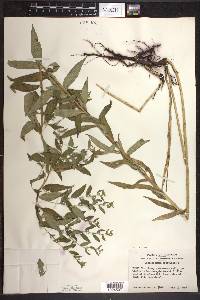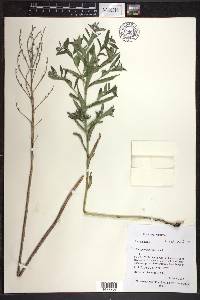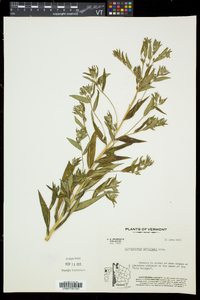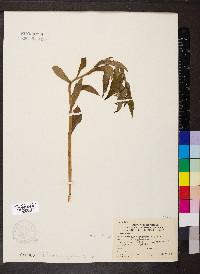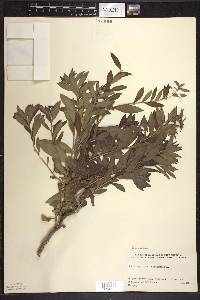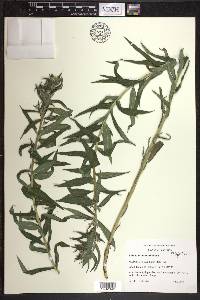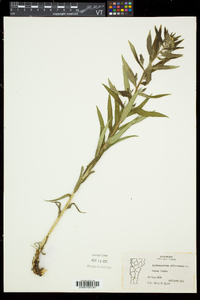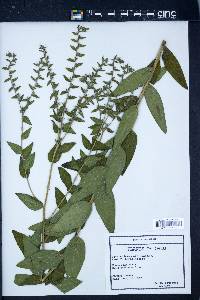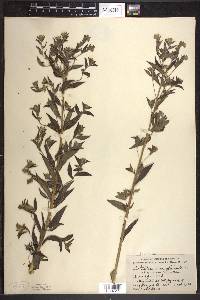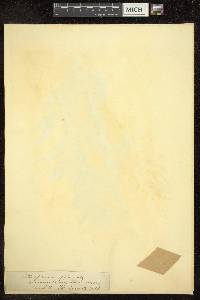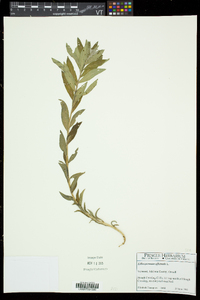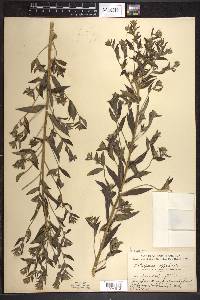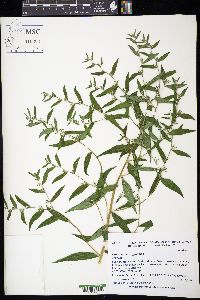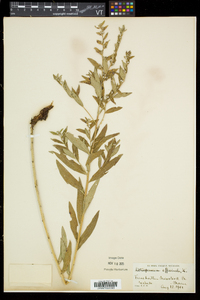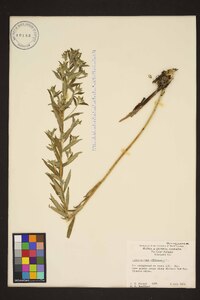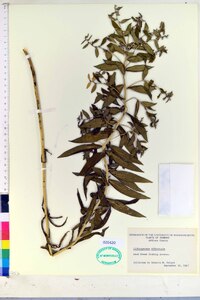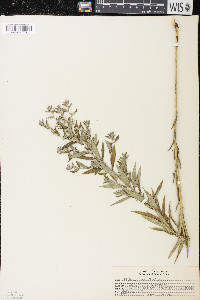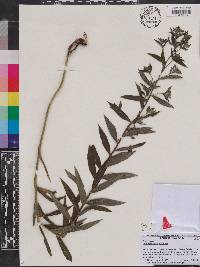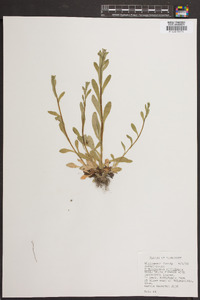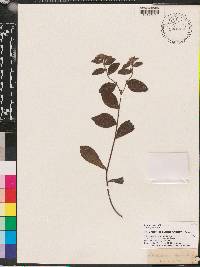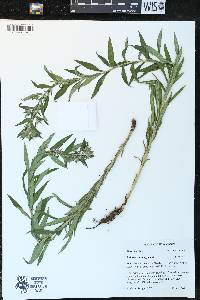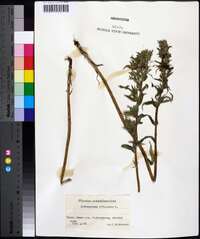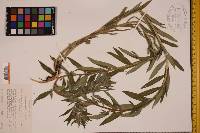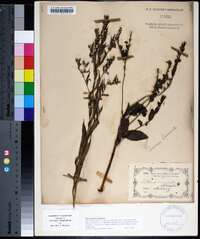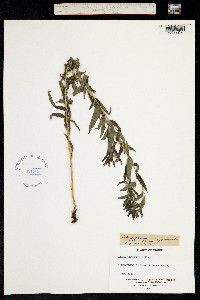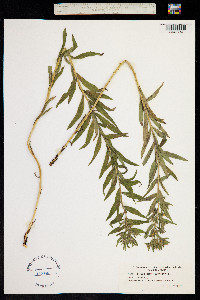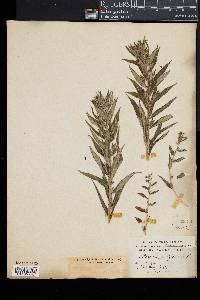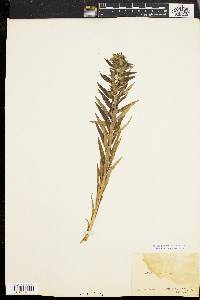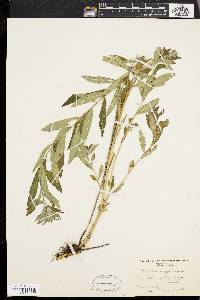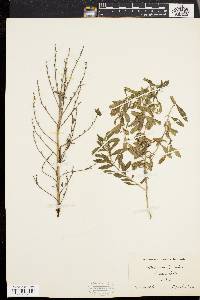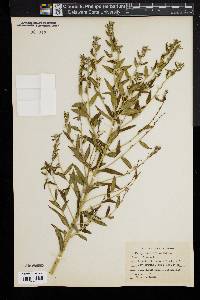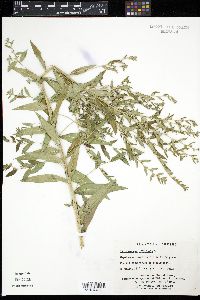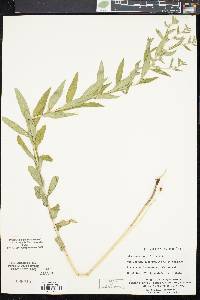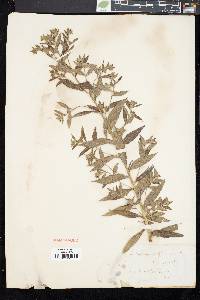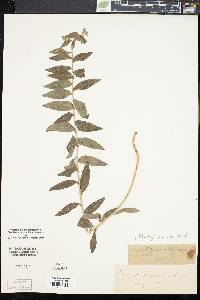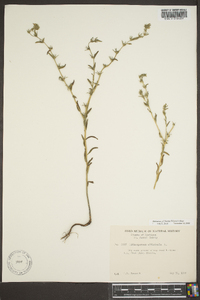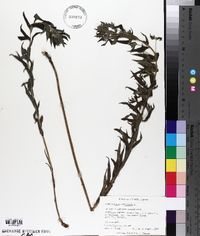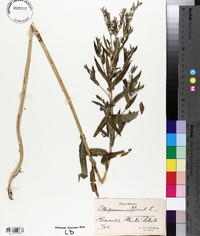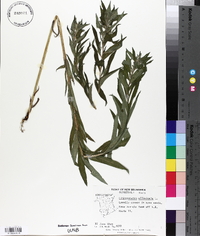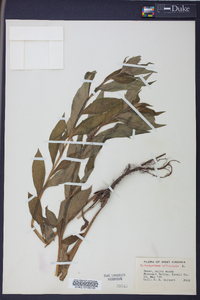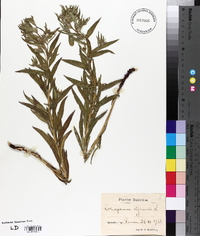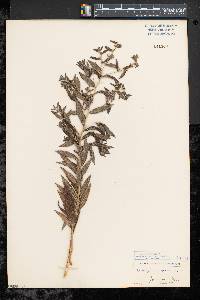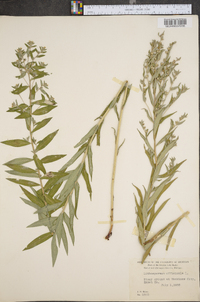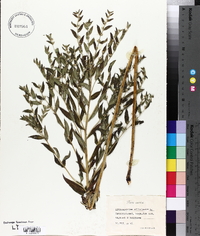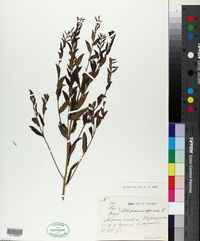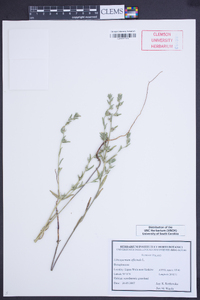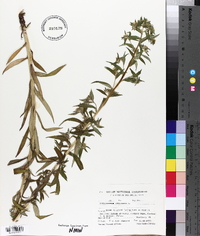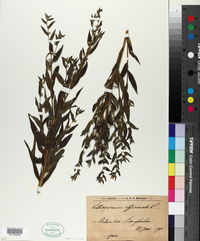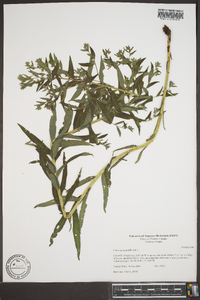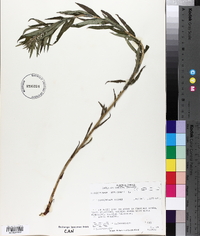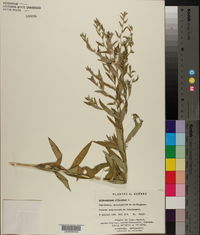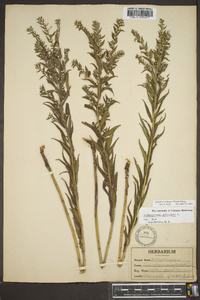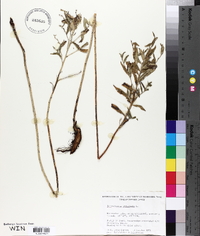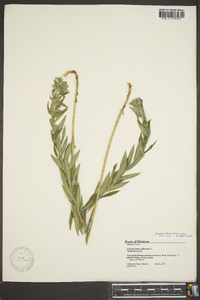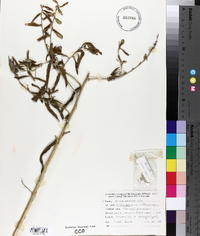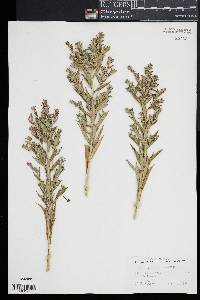Lithospermum officinale
|
|
|
|
Family: Boraginaceae
European Gromwell
|
Perennial herb 20 cm - 1 m tall Stem: single or many, arising from a stout rhizome, erect, much branched above, rough-hairy with somewhat loosely appressed or even spreading hairs. Leaves: many (at least 25) below inflorescence (spaced under 2 cm apart), alternate, mostly stalkless, non-toothed, upper surface very harshly rough-hairy, lower surface more or less ascending-hairy, membranous (with two or three lateral veins evident on each side of midrib), up to 10 cm long, 0.6 - 2 cm wide, much longer than wide, somewhat lance-shaped with very pointed tips and somewhat gradually narrowed bases. Flowers: many, solitary in upper leaf axils, dense and crowded (often less than 1.5 cm apart), stalkless, yellowish white or greenish white, small (4 - 5 mm tall, under 7 mm wide), radially symmetric, funnel-shaped with tube and short ascending to spreading lobes. Sepals: five, rough-hairy, up to 4 mm long (often slightly longer than petal tube), much longer than wide, oblong-linear with blunt tips. Petals: five, but fused for over half their length into a narrow cylindric tube, then separating into five, ascending to spreading, somewhat egg-shaped lobes with narrowed tips. The outer surface of the petal lobes are hairy for most of their length. Stamens: five, attached to inside of petal tube, and the oblong anthers not extending past the petal tube. Pistil: with one, deeply four-lobed, superior ovary; one, slender style; and one, distinctly two-lobed stigma. The style of each flower may be of two different lengths (heterostyly), short or long, but neither type extends past the petal tube. Fruit: a cluster of one to four, erect, shiny, white to very pale brown, hard, bony, smooth or very sparsely pitted, 2.7 - 4 mm tall, egg-shaped nutlets with fairly blunt tips, and a rounded base with an oblique, off-center raised rim. The nutlet clusters are enclosed by the erect, but narrow sepals. Similar species: Lithospermum officinale is very similar to L. latifolium, but that species has broader (at least 2 cm) and fewer (under 20) stem leaves, and the surface hairs are shorter, softer and more closely appressed. Lithospermum arvense is also similar, but that species does not have visible lateral veins on the leaves, the petal lobes are mostly hairless on their outsides, and the nutlets are drab grayish, and obviously wrinkled and bumpy or pitted. The other species of Lithospermum in the Chicago Region have showy yellow flowers arranged in terminal inflorescences, and the sepals are much shorter than the petals. A species of the southeast United States, L. tuberosum, is also quite similar, except there are basal leaves present in a rosette when the plant flowers, and the stem leaves do not reduce in size up the stem. Flowering: August Habitat and ecology: Introduced from Europe, very rare, mostly in waste ground, such as along railroads. Occurence in the Chicago region: non-native Author: The Field Museum Erect, usually much branched perennial to 1 m, the principal internodes usually less than 2 cm; lvs subsessile, lanceolate to oblong or oblanceolate, 6-15(-20) mm wide, gradually acute, with 2 or 3 conspicuous lateral veins on each side; fls solitary in the crowded upper axils, 3-15 mm apart at maturity, white or nearly so, 4-5 mm; cal-lobes nearly as long as the cor; nutlets ovoid, 3-3.5 mm, white to pale brown, shining, smooth or sparsely pitted; 2n=28. Native of Eurasia, intr. as a weed of waste places from Que. to Minn., s. to N.J. and Ill. May-Aug. Gleason, Henry A. & Cronquist, Arthur J. 1991. Manual of vascular plants of northeastern United States and adjacent Canada. lxxv + 910 pp. ©The New York Botanical Garden. All rights reserved. Used by permission. |

